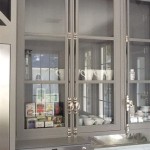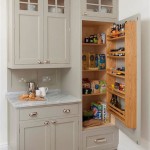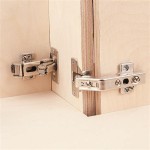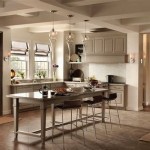Should I Put Handles On My Kitchen Cabinets Or Not?
The decision of whether to install handles on kitchen cabinets is a seemingly small one, yet it has a significant impact on both the functionality and aesthetics of a kitchen. This choice involves considering various factors, including design preferences, practicality, cleaning considerations, and budget. A thorough understanding of the advantages and disadvantages of each option is essential for making an informed decision.
Cabinets without handles, often referred to as handleless cabinets, offer a sleek, minimalist aesthetic. This style contributes to a streamlined and uncluttered look, which is particularly popular in contemporary kitchen designs. The absence of handles creates smooth, unbroken lines across the cabinetry, enhancing the sense of spaciousness, especially beneficial in smaller kitchens. Handleless cabinets can also contribute to a more seamless transition between the kitchen and adjoining living spaces, creating a cohesive design flow.
Several mechanisms enable the operation of handleless cabinets. Push-to-open mechanisms utilize a spring-loaded latch that releases the door with a gentle push. Recessed channels or finger pulls carved into the door or drawer fronts provide a subtle grip for opening. Touch-release mechanisms, often electronically controlled, open the cabinets with a light touch. Each of these options offers varying levels of convenience and integrates differently with the overall cabinet design.
However, handleless cabinets also present certain challenges. Fingerprints and smudges are more noticeable on these surfaces due to frequent contact required for opening. This necessitates more frequent cleaning and maintenance to maintain a pristine appearance. The mechanisms involved in handleless designs can sometimes be more complex and prone to malfunction than traditional handles, potentially leading to higher repair costs. Moreover, some individuals may find handleless cabinets less convenient to operate, particularly when hands are wet or dirty.
Cabinets with handles, on the other hand, offer a more traditional and arguably more practical approach. Handles provide a clear, defined grip, making it easier to open cabinets and drawers, especially when carrying items or in a hurry. This ease of use can be particularly beneficial for individuals with limited mobility or dexterity. A wide variety of handle styles, materials, and finishes are available, allowing for extensive customization and personalization of the kitchen design. Handles can serve as decorative accents, complementing the overall style of the kitchen and adding visual interest.
From a practical standpoint, handles can protect cabinet surfaces from fingerprints and smudges, as contact is primarily made with the handle itself. This can reduce the frequency of cleaning required. Traditional handles are generally more durable and less prone to malfunction than the mechanisms used in handleless cabinets, resulting in lower maintenance costs. The simplicity of their design also contributes to their longevity.
The choice between handles and handleless cabinets also has budgetary implications. Handleless cabinets often involve more complex hardware and installation processes, potentially increasing the overall cost. The specific mechanism chosen also influences the price, with touch-release systems typically being the most expensive. Handles, while offering a wide range of price points, can be a more budget-friendly option, particularly when choosing simpler designs and materials.
The style of the kitchen plays a crucial role in determining the suitability of handles or handleless cabinets. Handleless cabinets are often favored in contemporary and minimalist kitchens, where their sleek lines and uncluttered appearance enhance the modern aesthetic. Traditional kitchens or those with a more ornate style may benefit from the decorative element and enhanced functionality that handles provide. Transitional kitchens, which blend elements of both contemporary and traditional styles, can accommodate either option, depending on the specific design choices.
The lifestyle and preferences of the homeowner are paramount in this decision. Families with young children may find handles easier and safer to operate, while individuals who prioritize a minimalist aesthetic may prefer the clean lines of handleless cabinets. Consideration should also be given to the frequency of cooking and the overall functionality required of the kitchen. A busy kitchen may benefit from the practicality of handles, while a less frequently used kitchen might prioritize aesthetics and opt for a handleless design.
Ultimately, the decision of whether to install handles on kitchen cabinets is a personal one. By carefully weighing the advantages and disadvantages of each option, considering the style of the kitchen, and evaluating individual needs and preferences, homeowners can make an informed choice that enhances both the functionality and aesthetics of their kitchen space.

Cabinet Hardware Placement Guide

Kitchen Cabinet Handle Placement Dos And Don Ts Living Letter Home

Cabinet Hardware Placement Guide

How To Place Cabinet Knobs Pulls

Cabinet Hardware Placement Guide For Shaker Cabinets

How To Install Cabinet Handles Straight Without Losing Your Mind

How To Put Hardware Knobs Handles On Kitchen Cabinets

Cabinet Hardware Placement Guide

Cabinet Knob Pulls Vs Handles Refurbishing Ideas Doors N More

How Cabinet Handles Can Make A Difference To Your Kitchen Doors The Door Company
Related Posts








